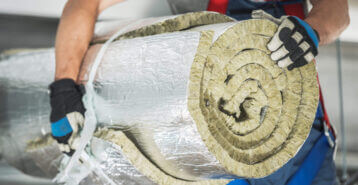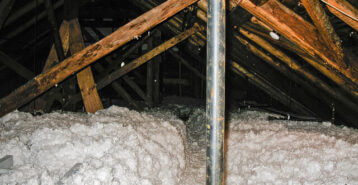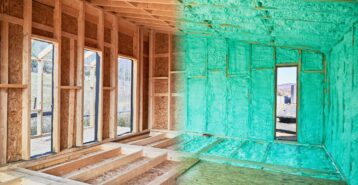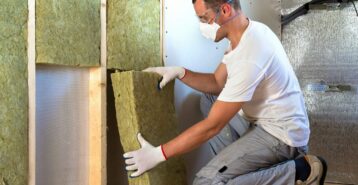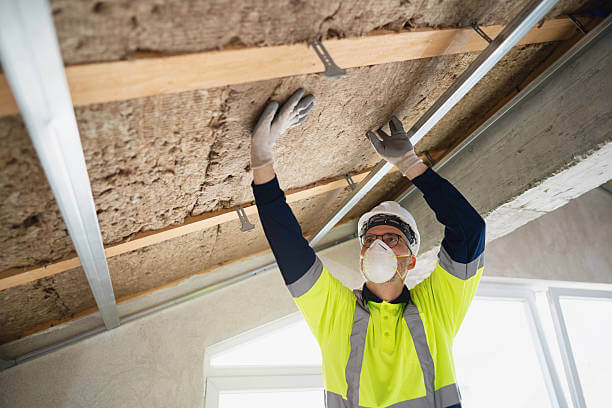What Insulation Is Best for Soundproofing?
Soundproofing your home creates a peaceful environment where you can work, relax and sleep. Effective soundproofing can reduce the noise you hear between different rooms of your home, block ambient noise from the outdoors and create studio-quality quiet for home theater rooms and offices. But choosing the right materials and methods is key. Let’s take a look at the best soundproof insulation options for your home.
Best Insulation for Soundproofing

Insulation plays a vital role in controlling sound transmission within your home. Soundproofing involves reducing the movement of sound waves through building materials such as walls, floors and ceilings. While traditional insulation is typically designed for thermal resistance measured by its R-value, soundproofing insulation focuses on preventing sound from traveling through different surfaces.
In other words, the pink batting you installed to keep your attic warm in winter and cool in summer is not the kind of material that will also make watching a movie in your home immersive.
Different materials offer varying levels of sound resistance, and understanding their properties will help you make an informed decision. We’ll look at the soundproofing capabilities of various insulation types and how to choose the best option for your needs.
Insulation Soundproofing by Material
Different types of insulation have different capacities for blocking sound. Some materials are specifically designed for noise reduction, while others serve multiple purposes such as thermal insulation and soundproofing combined. Each of these types of insulation is rated based on its Sound Transmission Class, or STC, which is a number indicating how well a material can prevent the passage of airborne sound. The higher the number, the better the material is at blocking sound.
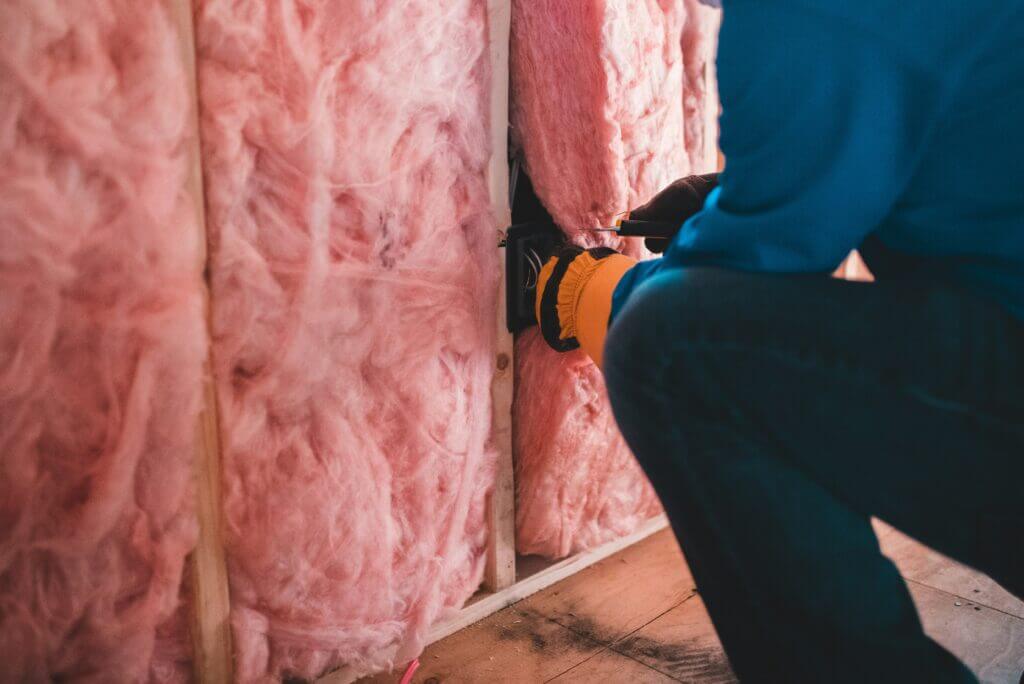
Fiberglass
- Soundproofing Ability: Moderate
- Details: Fiberglass insulation is often used in walls and ceilings to maintain heat but can also reduce sound transfer. While it is effective at absorbing sound to a degree, it doesn’t completely block noise, especially in high-traffic areas. But, it’s widely available and affordable.
- Sound Transmission Class: Typically around 33-40, which means it can block sound moderately but not completely.
Rock Wool or Mineral Wool
- Soundproofing Ability: High
- Details: Rock wool is denser and thicker than fiberglass, which makes it a better option for soundproofing. It absorbs sound waves more effectively, reducing noise transmission between rooms. It is also considered fire-resistant because it is more stable under high temperatures.
- Sound Transmission Class: Can range from 45 to 52.
Foam
- Soundproofing Ability: Moderate
- Details: Foam insulation, such as spray foam or foam boards, can help reduce sound transmission, especially in smaller spaces such as gaps and cracks. But it’s not as effective as fiberglass or rock wool in full-wall soundproofing. Instead, foam works best at sealing air leaks, which can indirectly reduce sound.
- Sound Transmission Class: Around 35-40 for spray foam.
Cellulose
- Soundproofing Ability: Moderate to high
- Details: Made from recycled paper, cellulose insulation is dense and can effectively reduce sound transfer when blown into walls and ceilings. It’s a great eco-friendly option for soundproofing.
- Sound Transmission Class: Typically between 40 and 45.
Acoustic Foam Panels
- Soundproofing Ability: High
- Details: Acoustic foam panels are specifically designed for soundproofing. They are typically used in combination with other materials and are great for absorbing sound in areas such as home studios or entertainment rooms. However, they work best for controlling echo and reverberation and not for blocking sound from entering or exiting the room.
- Sound Transmission Class: These panels don’t have an STC and are instead focused on controlling sound reflections vs blocking sound transmission
Soundproofing Insulation Materials and STC Ratings
| Insulation Material | Soundproofing Ability | STC Rating |
|---|---|---|
| Fiberglass Insulation | Moderate | 33-40 |
| Rock Wool (Mineral Wool) | High | 45-52 |
| Foam Insulation | Low to Moderate | 35-40 |
| Cellulose Insulation | Moderate to High | 40-45 |
| Acoustic Foam Panels | High (in specific use) | N/A |
Additional Materials for Soundproofing
In addition to insulation, other materials can improve the soundproofing of a room. These include:
- Underlayment Materials: Adding soundproof underlayment beneath carpet, vinyl, and hardwood can significantly reduce sound transfer between the floors of your home.
- Flooring: Carpeting and thick rugs are also excellent at reducing noise transmission between rooms, especially on hard surfaces such as hardwood or tile. Wood and laminate floors can transfer more noise unless they’re installed with soundproof underlayments.
Soundproof Insulation Applications
Soundproof insulation can be applied in several parts of the home. Here are common areas where insulation plays a crucial role:
Walls and Stud Walls
When soundproofing walls, adding mass to the wall through multiple layers of dense material is key. Rock wool, cellulose, and fiberglass are all popular choices for adding soundproof insulation to walls. Double layers of drywall and noiseproofing compound between the layers can improve effectiveness. Consider installing acoustic panels on top of insulation to dampen vibrations.
Joists
For floors and ceilings, filling the joist spaces with soundproof insulation can help block noise from traveling between floors. Rock wool and cellulose are great choices for soundproofing because of their density and ability to absorb sound.
Acoustic Panels
While not technically insulation, acoustic panels are particularly effective in controlling reverberation and echoes in media rooms, offices, and home studios.
Soundproofing a Single Room with Insulation
To soundproof a single room, you can focus on walls, ceilings, and floors. Adding dense insulation and soundproof drywall can help create a quiet space. This approach is commonly used in home theaters and music studios.
How Thick Should Insulation Be for Soundproofing?
The thickness of your insulation plays an important role in soundproofing. The thicker the insulation, the more sound it can absorb or block. For moderate noise reduction, insulation should be at least 3 to 4 inches thick. For the best soundproofing results, particularly in high-noise areas, aim for 6 to 8 inches of insulation thickness. Particularly noisy areas, such as city apartments or busy streets, could require even thicker insulation or double layers.
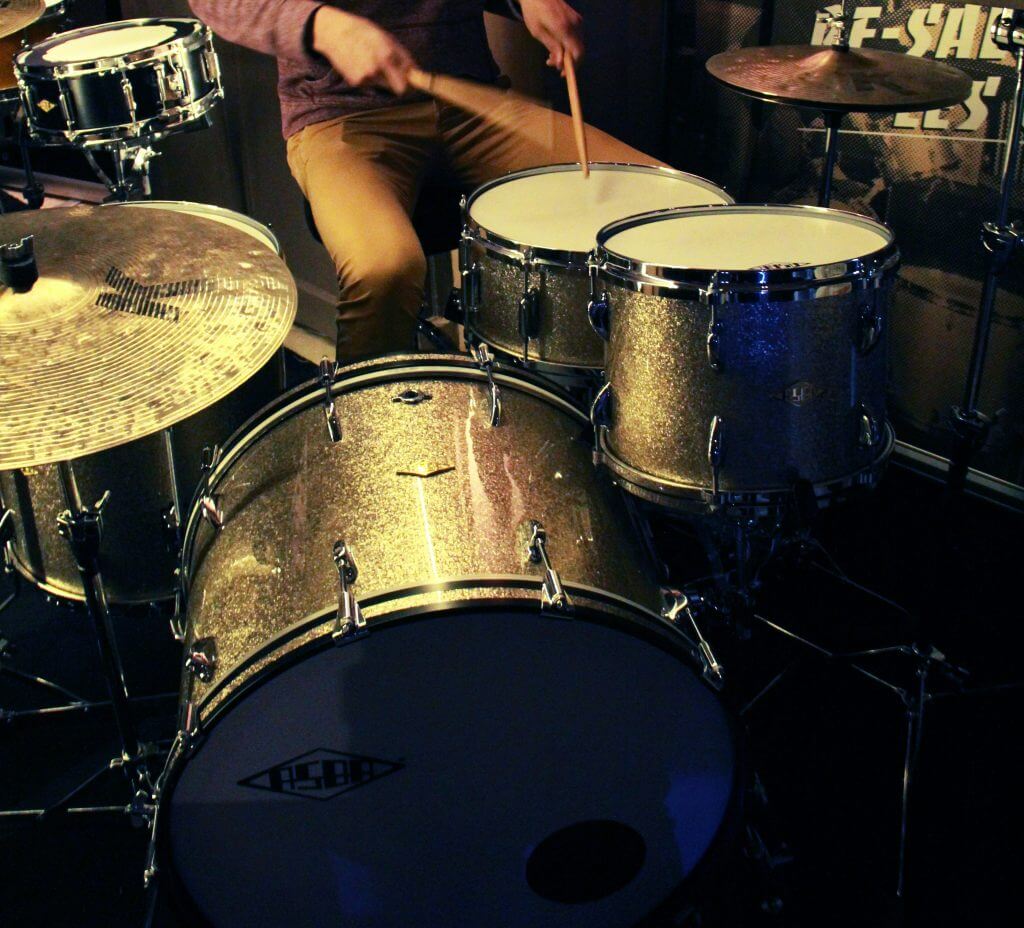
Best Insulation for Soundproofing Walls
For walls, rock wool and cellulose are two of the best options for soundproofing. These materials are dense, absorb sound effectively, and can be installed in both new construction and existing walls. Using multiple layers of these materials with a combination of soundproof drywall will maximize sound reduction.
Best Insulation for Soundproofing Between Floors
Between floors, cellulose and rock wool are excellent choices. Their density helps to absorb vibrations and block sound transmission. For ultimate soundproofing, you may need to remove floorboards or replace joists to insert thicker insulation, though complete sound isolation might not be achievable unless your home is structurally separated like a commercial building.
DIY vs. Professional Insulation Soundproofing
Soundproofing a home can be a DIY project, especially when using materials such as fiberglass batt insulation or foam boards. However, more advanced solutions, such as installing multiple layers of drywall or using specialized materials such as noiseproofing compound could require professional installation.
DIY Cost Savings
DIY soundproofing can save you money upfront, but it might not deliver the best results. Hiring an insulation professional typically leads to better performance and long-term savings.
Professionals can provide custom solutions tailored to your home’s specific needs. They are familiar with advanced techniques for isolating sound and can ensure maximum efficiency.
The best insulation for soundproofing depends on your specific needs, the area being insulated, and the type of noise you want to block. Whether you’re soundproofing walls, floors, or ceilings, selecting the right insulation material and installation method will ensure you achieve the desired level of noise reduction. For high levels of soundproofing, materials such as rock wool, cellulose, and acoustic foam are excellent choices. Consider working with professionals to find the best soundproof insulation for your home.

